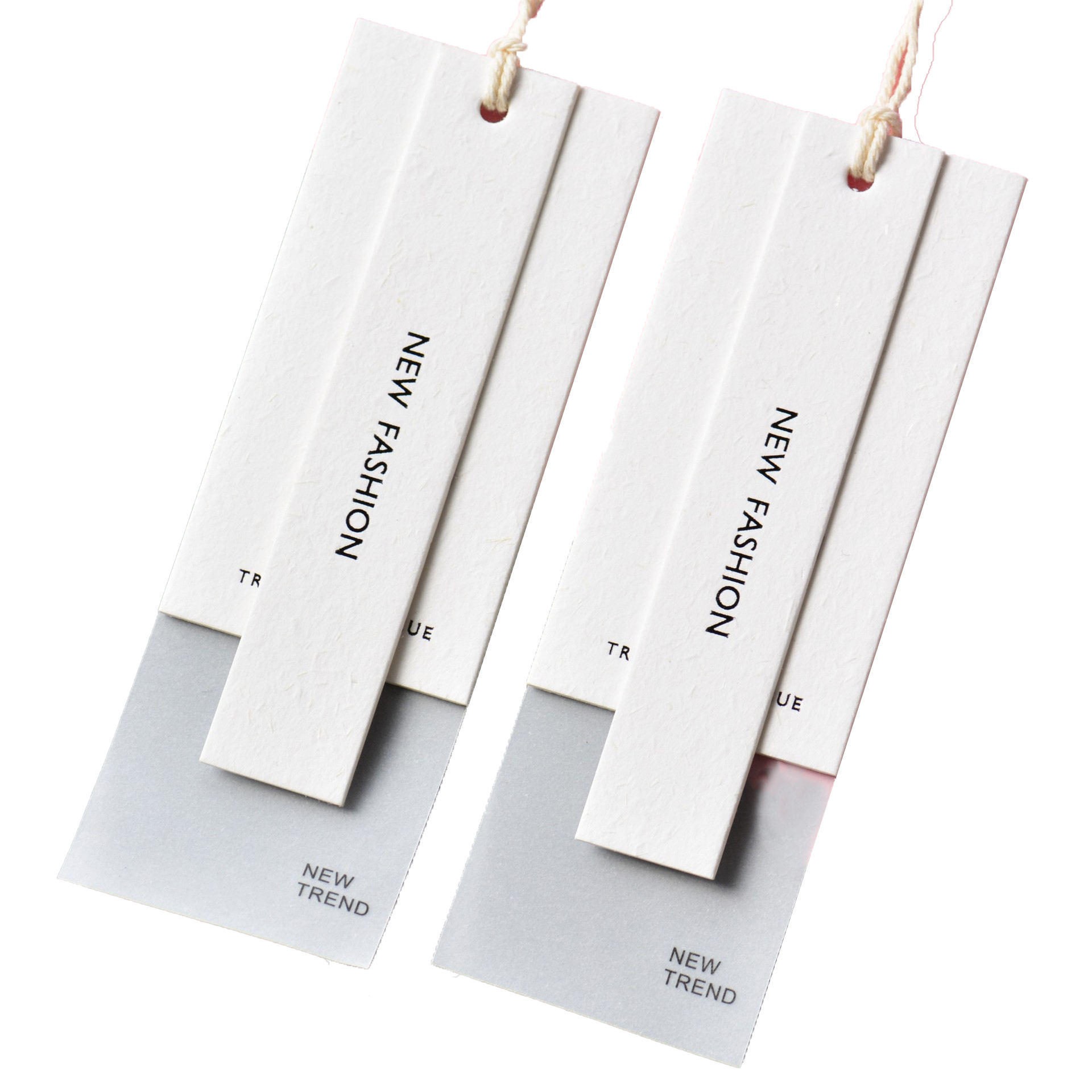
Hang tags play a crucial role in the world of retail, serving as small but powerful tools for conveying information about a product. These tags not only provide essential details but also serve as branding elements, enhancing the overall presentation of merchandise. One key aspect that contributes significantly to the effectiveness of hang tags is the choice of materials. In this article, we will explore the various materials used in the manufacturing of hang tags, shedding light on their unique qualities and applications.

1.Paper Hang Tags:
Paper hang tags are the most common and cost-effective option. They come in different weights and finishes, allowing for versatility in design. From kraft paper for a rustic look to glossy paper for a more polished appearance, paper hang tags are customizable and environmentally friendly.
2.Cardstock Hang Tags:
Offering a sturdier feel than standard paper, cardstock hang tags are ideal for products that require a more durable tag. This material is well-suited for luxury items or those that need to withstand handling.
3.Plastic Hang Tags:
For a modern and sleek appeal, plastic hang tags are a popular choice. They are waterproof and durable, making them suitable for products exposed to various environmental conditions. Plastic hang tags are often used in the fashion and outdoor industries.
4.Metal Hang Tags:
Adding a touch of elegance, metal hang tags are associated with high-end products. These tags are durable and can be customized with intricate designs through processes like etching or stamping.
5.Fabric Hang Tags:
Fabric hang tags, often made from materials like cotton or canvas, provide a tactile and textured feel. This option is commonly chosen for clothing and accessories, adding a unique and tactile element to the product.
6.Leather Hang Tags:
Exuding a sense of luxury and craftsmanship, leather hang tags are favored for premium products. They can be embossed or debossed with logos and text, enhancing the overall branding of the item.
7.Recycled Materials:
In alignment with growing environmental concerns, hang tags made from recycled materials are gaining popularity. These can include recycled paper, cardboard, or other eco-friendly options, contributing to a brand's sustainability initiatives.
8.Foam Hang Tags:
Foam hang tags are lightweight and offer a soft, cushioned feel. They are often used for delicate items or products that require extra protection during transportation.
9.Die-Cut Hang Tags:
While not a material per se, the die-cutting process is worth mentioning. Hang tags can be crafted into various shapes, enhancing visual appeal and allowing for creative branding opportunities.
Conclusion:
In conclusion, the materials used in hang tags play a pivotal role in shaping the overall perception of a product. From traditional paper to luxurious metal, each material brings its own set of qualities and characteristics. When choosing the material for hang tags, it's essential to consider the nature of the product, the target audience, and the brand image. By selecting the right material, businesses can create hang tags that not only convey essential information but also contribute to a memorable and positive consumer experience.
Premium quality hang tags printing Hang tags for retail packaging Custom-shaped hang tags for branding
